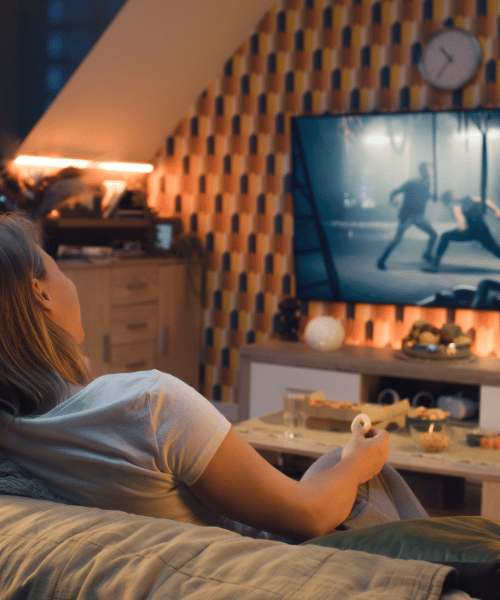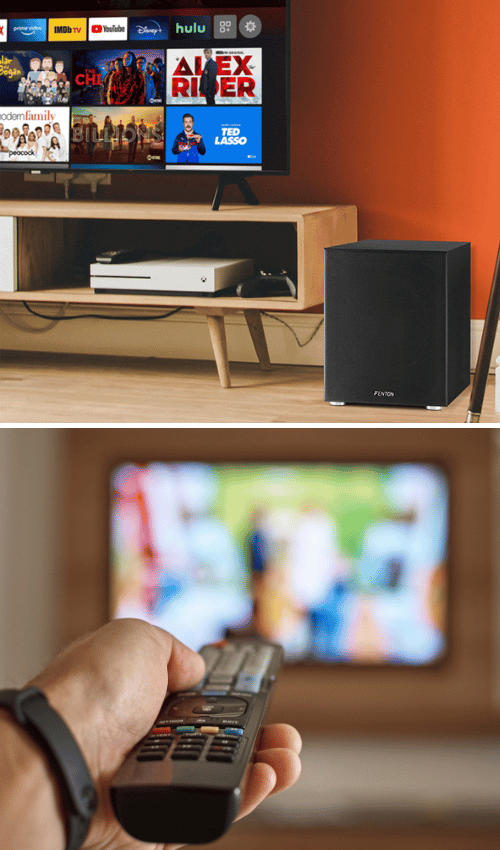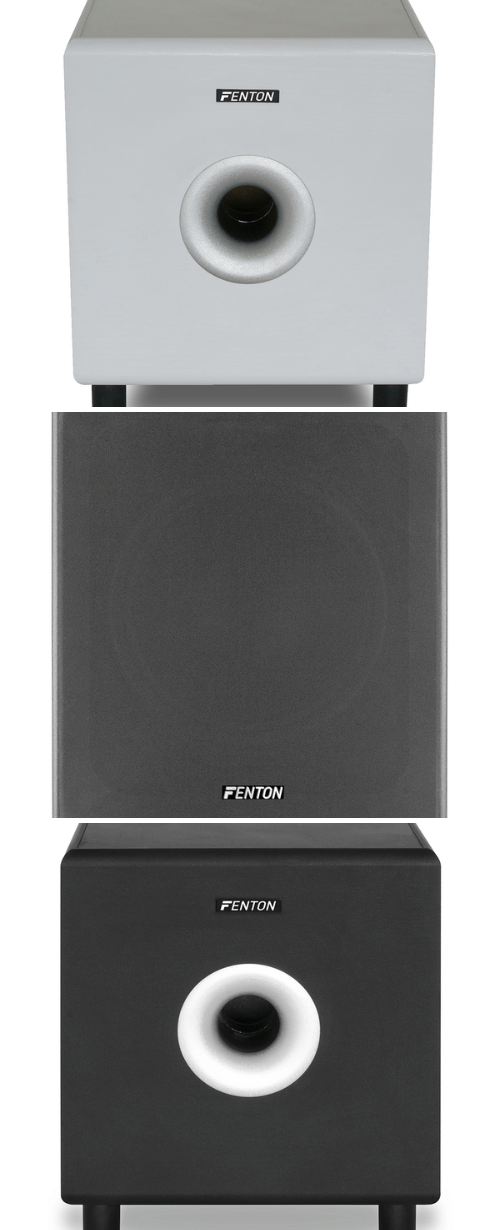Dial Up the Drama: Why Your Home Cinema Needs a Proper Subwoofer Speaker
There’s nothing quite like the immersive magic of a home cinema. Whether you're all about explosive action flicks, atmospheric thrillers, or the gentle hum of a well-scored drama, the sights are only half the story. The sound—deep, rumbling, room-filling sound—is what really pulls you into the heart of it. That’s where your audio setup can make or break the moment.
While many folks obsess over high-definition screens and elegant speaker arrays, there's one crucial element that often gets sidelined: the subwoofer speaker. It’s not just about loud bangs or chest-thumping bass (though it does that beautifully). A good subwoofer underpins the entire soundstage—adding depth, clarity, and that visceral kick that turns a living room film night into a true cinematic experience.
In this post, we’ll dive into the different types of subwoofers available—focusing particularly on active and powered options—and break down the key features you should look out for when shopping. Whether you're upgrading your home cinema or installing a powerful audio system in a commercial venue, we’ll also highlight some top picks from trusted categories like home cinema subwoofers and PA subwoofers.
Let’s get into the good vibrations—your next blockbuster deserves it.


Why Bass Matters in Home Cinema
You might not see bass, but you’ll definitely feel it—and in a home cinema setup, that’s half the magic. Low frequencies are what give film scores their emotional weight, make explosions shake your sofa, and bring subtle ambient effects to life. Ever watched a horror film without the low rumble building in the background? It just doesn’t hit the same.
A subwoofer speaker handles the deep-end of the frequency range, freeing up your main speakers to focus on mids and highs. Without one, your system might sound a bit thin or strained when it tries to cover everything at once. Add a subwoofer into the mix, though, and suddenly you’ve got balance, punch, and richness across the full spectrum.
Picture this: you're watching a big battle scene. With only standard speakers, it might sound a bit flat—the details are there, but the impact isn’t. Add a subwoofer speaker, and you’re right there in the chaos, with every rumble and boom hitting you in the chest. It’s not just volume; it’s presence.
Subwoofers work in tandem with your main speakers, enhancing rather than overpowering. It’s all about filling in the sonic gaps, so the dialogue stays crisp, the music swells beautifully, and every on-screen moment lands just right.
Active vs Passive Subwoofers: What’s the Difference?
Let’s clear up the basics first. An active subwoofer, also called a powered subwoofer, has a built-in amplifier. It’s a plug-and-play solution—just connect it to your AV receiver or sound system, tweak a few settings, and you’re away. A passive subwoofer, on the other hand, doesn’t have an amp inside—it needs an external one to power it, which means more gear and more cabling.
Now, active subwoofers tend to be the go-to for home cinema users—and for good reason. They’re easier to install, more compact in terms of gear footprint, and often come with built-in tuning features like adjustable crossovers and phase controls. That means you can tailor the bass to your room without needing a degree in sound engineering.
Let’s say you’ve got a smaller living room—an active subwoofer is ideal here. Fewer components, simpler setup, and enough power to shake the floor without overwhelming the space. For a larger home cinema room, a powered sub still holds up, but you might consider a beefier unit with a larger driver and more wattage to really fill the space.
Passive subwoofers do have their place—usually in custom installations or commercial setups where you're already running external amps. But for most folks building a home cinema, an active subwoofer ticks all the boxes: clean look, powerful output, and no hassle.


Key Features to Look For in a Home Cinema Subwoofer
Choosing the right subwoofer isn’t just about picking the loudest box in the room—it’s about knowing what specs will give you the best performance for your space and system. Whether you’re looking at a powered subwoofer or an active subwoofer (spoiler: they’re the same thing, just two names for the same beast), these are the features that really matter.
Power Output (Wattage)
Wattage tells you how much grunt the subwoofer can deliver. More power generally means more headroom and cleaner bass, especially at higher volumes. For a standard living room setup, something in the 100–300 watt range is plenty. For larger or dedicated cinema rooms, don’t be afraid to go higher.
Frequency Range
A good subwoofer digs deep. Look for a model that reaches down to around 20–30Hz on the low end. That’s where you’ll find those floor-shaking rumbles and immersive low-end effects.
Connectivity
Modern subwoofers often come with a variety of connection options. Look out for RCA and LFE inputs for easy hook-up to AV receivers. Some active subwoofers even support wireless connectivity, cutting down on cable clutter and giving you more placement freedom.
Size and Design
Subwoofers come in all shapes and sizes. Compact models are great for tighter spaces, while larger enclosures usually pack more punch and deeper bass. Think about both your room size and your interior vibe—you want power, but you also want it to look right.
Built-in Crossover and Phase Control
These are small features with big impact. A built-in crossover lets you control how the sub blends with your main speakers, and phase control helps align the timing so everything hits in sync. The result? Tight, accurate bass that doesn’t fight the rest of your system.
Placement and Room Acoustics: Getting the Most from Your Subwoofer
You could have the best subwoofer on the market, but if it’s stuck in the wrong spot, it won’t perform to its full potential. Subwoofer placement can seriously affect how bass behaves in your room, so let’s break it down.
Ideal Locations
Corners tend to boost bass, so placing your subwoofer there can give you more output. Putting it against a wall can also help reinforce those low frequencies. Alternatively, tucking it near your main seating area gives a more direct, immersive feel. A bit of trial and error goes a long way here—small changes in position can make a big difference.
Room Size and Layout
Bigger rooms often swallow up bass, so a more powerful sub or dual sub setup might be needed to keep things balanced. In smaller rooms, you can get away with less power—but you’ll want to be careful of overly boomy or muddy sound.
Reflections and Absorption
Sound doesn’t just travel in straight lines. It bounces off walls, floors, and even furniture. Sofas and curtains help absorb reflections, which can tighten up the bass, but too many hard surfaces might lead to echoes or standing waves. If your sub sounds uneven or inconsistent across the room, consider acoustic treatment or repositioning.
One great perk of using an active subwoofer is flexibility—it doesn’t need to be near your amp or AV receiver. Without the tether of an external amplifier, you’ve got more freedom to place it where it performs best, not just where it fits the wiring.
Top Home Cinema Subwoofer Speakers to Consider
1. Fenton SHFS08W White Powered HiFi Surround Sound Subwoofer – 8"
Power Rating: 200W Max
Key Features:
- 8” woofer with downfiring design
- Built-in amplifier (active subwoofer)
- Sleek white finish for modern interiors
- Adjustable crossover and phase control
Ideal For: Small to medium rooms, living rooms with minimalist decor
This powered subwoofer delivers clean, deep bass without dominating your space. The compact design makes it ideal for more refined setups where aesthetics and sound quality go hand-in-hand.
2. Fenton SHFS12B 12-Inch Active HiFi Subwoofer – Black
Power Rating: 400W Max
Key Features:
- 12” long-throw woofer for rich low-end
- Bass reflex port for deeper extension
- Active design with internal amp
- Rugged black enclosure
Ideal For: Medium to large home cinemas needing impactful bass.
If you want your explosions to thump and your soundtracks to soar, this subwoofer speaker has the power and presence to make it happen. Perfect for rooms that demand a bit more muscle.
3. Fenton SHFS08B 8" Active HiFi Subwoofer – Black
Power Rating: 200W Max
Key Features:
- Compact 8” woofer
- Bass reflex enclosure
- Built-in amplifier
- Classic black finish
Ideal For: Small rooms, bedroom setups, or desktop home cinema systems
This is a fantastic entry-level subwoofer speaker for those dipping their toes into the home cinema game. Despite its modest footprint, it packs enough punch to bring movie nights to life.
Each of these powered subwoofers gives you that lovely plug-and-play simplicity while delivering the immersive bass that makes cinema audio come alive. Whether you’re styling a crisp white lounge or going for that stealthy black-out home cinema look, there’s a Fenton model to match.


Pairing Speakers and Subwoofer in a Complete System
When you’re putting together a home cinema, your subwoofer speaker needs to mesh well with your main speakers. A mismatch in settings can lead to boomy bass, gaps in frequency, or worse—muddy dialogue. Here's how to get them working in harmony:
Crossover Settings
This determines where the subwoofer takes over from your speakers. A good starting point is around 80Hz, but you can adjust based on your speaker size. Smaller speakers might need a higher crossover; larger ones might go lower.
Volume Matching
Balance is key. Your powered subwoofer shouldn’t overpower your system—it should blend. Use your AV receiver’s test tones or calibration mic (if available) to level things out.
Phase Alignment
If your bass sounds disconnected or weak, try flipping the phase switch on your subwoofer. This ensures that the sub is pushing sound in time with your main speakers, avoiding cancellation.
Many home cinema systems now come in speaker and subwoofer packages designed to work seamlessly together. These all-in-one solutions often feature tuned crossover points and matched frequency responses—making setup more foolproof, especially for beginners.
Conclusion: The Power of Bass in Home Cinema
When it comes to home cinema, visuals might catch the eye, but it’s the sound that really pulls you in. A well-chosen subwoofer speaker adds dimension, weight, and emotion to your audio—transforming everyday film nights into an experience that’s felt as much as it’s heard.
From the ease-of-use of a powered subwoofer, to the importance of matching your sub with your room size and speaker system, every decision counts. Whether you're building from scratch or adding low-end support to an existing setup, investing in a quality subwoofer can unlock sound you didn’t even know you were missing.
So whether it's a compact model for a cosy living room, or a beastly 12-inch unit for a dedicated theatre space, don’t underestimate the bass. It’s not just about volume—it’s about feeling every footstep, explosion, and orchestral swell like you're right there in the middle of the action.
Make the right subwoofer choice, and the rest of your system will shine.




